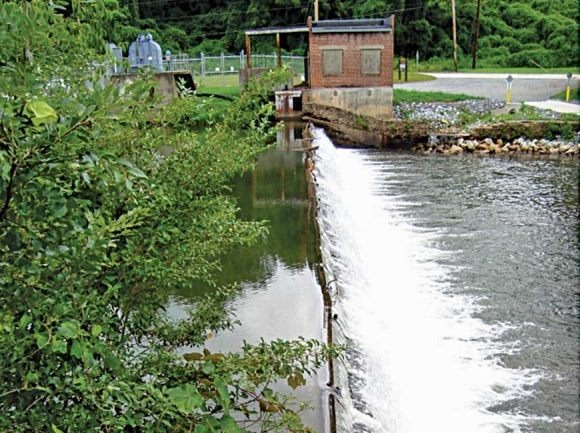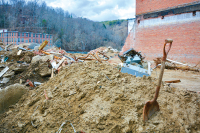Cullowhee Dam removal decision could take years
 The Cullowhee Dam creates a pool from which both the TWSA and WCU water systems draw. File photo
The Cullowhee Dam creates a pool from which both the TWSA and WCU water systems draw. File photo
It’s been two years since discussions began about the possibility of removing the Cullowhee Dam, and it could take years more to complete the additional studies needed to make a decision about removal and to raise the funds necessary to actually do it.
But the dam might not have years of life left in its present condition.
“We think the horizon is far enough out that we are going to go ahead and conduct some remedial repairs to the dam that we think are the most pressing,” Mike Byers, vice chancellor for administration and finance for dam owner Western Carolina University, said at a Tuckaseigee Water and Sewer Authority meeting July 16.
While WCU owns the dam, both WCU and TWSA have water intake structures in the pool the dam creates. A grant-funded study is currently underway to look at the feasibility of merging the two water systems, which could then result in a decision to replace the two intake structures above the dam with a single structure.
A 2017 study assessing the aging dam’s condition revealed multiple structural issues, including an undercut beneath the dam that could eventually result in a portion of the dam sliding or turning over, and erosion at the right wall that could eventually cause the slope and a portion of Wayehutta Road to wash away. Similarly, a 2005 study found that the dam showed evidence of “severe deterioration” and that its failure would pose “a significant threat to life safety” and a “significant economic and operational loss” to WCU.
The 2017 study said that repairing the dam to address safety and maintenance concerns would cost about $900,000, with Byers at the time saying WCU would spread the repairs over two to four fiscal years so as to fund them from its existing repair and renovation fund. However, when the nonprofit American Rivers approached WCU wishing to examine the removal option more closely, the university said it would be willing to put a pause on the repairs while removal was investigated. The study had estimated the cost of removal at $5 to $7 million.
Related Items
American Rivers published its study exploring the removal option in March. While the study, conducted by Asheville-based McGill Associates, concludes that there is enough water in the Tuckasegee River to supply WCU’s and TWSA’s water systems without the pool created by the dam, and that removing the dam would prove beneficial to the environment and community, comments from WCU and TWSA attached to the document questioned those findings.
“We all recognize that the current report is limited in scope,” TWSA and WCU wrote in a joint letter attached to American Rivers’ final report. “Because of this limited scope of work, it contains assumptions and outcomes identified as likely that must be validated. It is understood that confirmation of these will require substantial follow-up advanced planning efforts with a significantly expanded scope of work.”
In a July 23 meeting that included elected leaders from Jackson County and all the municipalities within it, TWSA Executive Director Dan Harbaugh said that it will take at least two years to get all the questions answered and nail down funding, should WCU and TWSA decide to pursue dam removal.
“The discussion on the dam is not at an end,” Harbaug said. “It’s really at its second beginning, I guess I would classify it. We now have enough information to know what additional questions need to be asked.”
WCU and TWSA say more information is needed as to what impact the dam removal might have on the availability of water for their customers, on the ecosystem and on community benefits. Right now, Harbaugh said during the July 16 TWSA meeting, TWSA is taking the lead to determine what regulatory requirements would apply should the dam be removed, and American Rivers is reaching out to faculty at WCU who might be able to complete some of the additional studies needed, such as gauging the stream at the location in question and examining the basin to determine what that part of the river might eventually look like were the dam removed.
“Once the dam comes out it can’t go back in,” Harbaugh said July 23. “We can only make this decision one time.”
In the meantime, WCU is pondering what it should do to ensure that the dam remains stable while these decisions are made.
“We’ll buy however much time we need to look at this the right way,” Byers said July 16.
WCU is still assessing which interim repairs it should complete and how much those repairs might cost. It’s possible, Byers said in an email, that the university will end up needing to do very little to ensure the dam’s stability for the next couple years.
“I made that statement at TWSA because I can see that the consideration over the future of the dam will take years, not months,” he wrote. “So, WCU needs to ensure that the dam continues to provide the reliable pool of water for the campus and the region during that time.”









